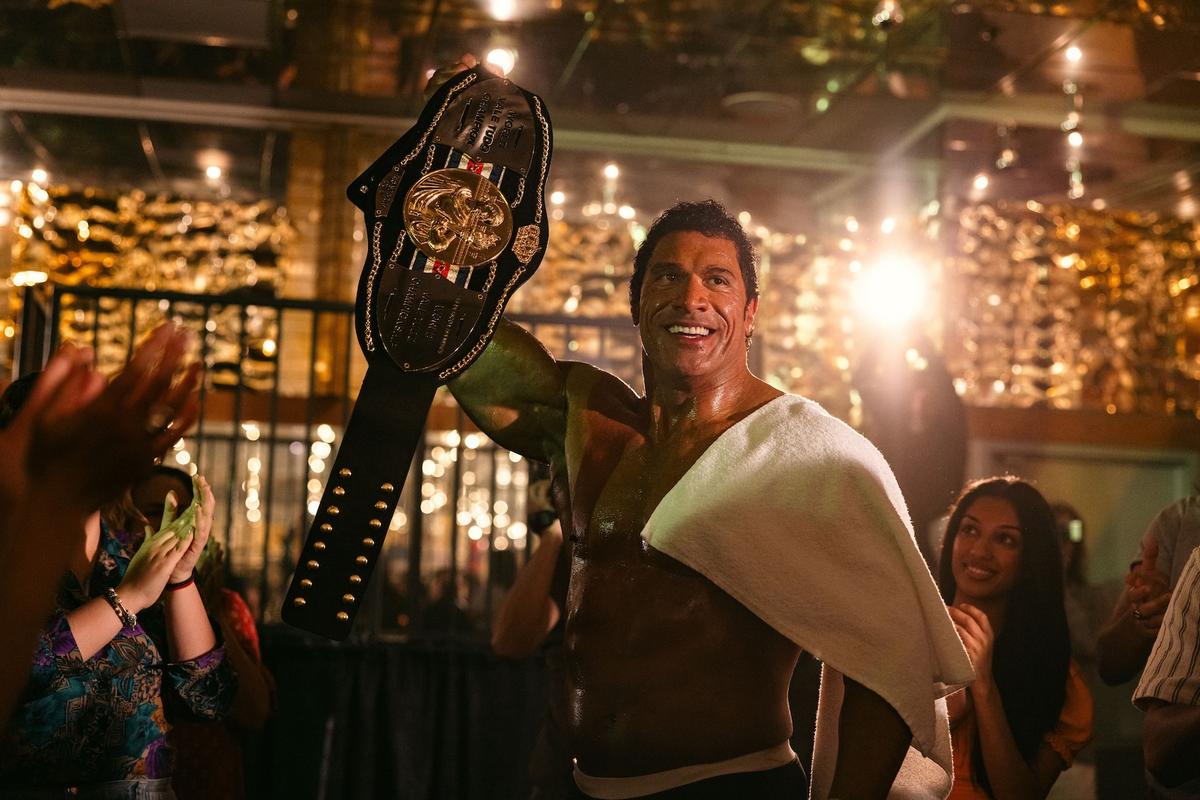
Before becoming Dwayne Johnson, the globally famous actor – both in stature and popularity – he was known as “The Rock,” a professional wrestler following in the footsteps of his father and grandfather in the WWF and WWE. Johnson wrestled professionally for just a few years before prioritizing a career in Hollywood. However, both his father, Rocky Johnson, and his grandfather, Peter Maivia, dedicated many years to the wrestling world. Very few people truly grasp the physical and emotional demands of professional wrestling like he does.
Johnson’s latest film, The Smashing Machine, focuses on the world of mixed martial arts, rather than professional wrestling. It’s clear Johnson has a personal stake in the story, which centers on Mark Kerr-a groundbreaking fighter in UFC and Pride-and the extreme lengths he went to for the adrenaline he experienced while competing. This pursuit of excitement led to incredibly demanding training, strict diets, and putting workouts ahead of his family and friends. He also relied heavily on drugs to cope with injuries, eventually developing a severe addiction that jeopardized his career, relationships, and ultimately, his life. It was all in the name of achieving victory.
Money definitely wasn’t the motivation. An early part of The Smashing Machine shows Kerr almost pleading with a Japanese promoter to pay the few thousand dollars he owed; the promoter pretended not to understand until Kerr just gave up on getting the money back. This contradiction is key to the film. While in the ring, Kerr was a terrifying fighter, earning him the nickname “The Smashing Machine,” outside of it, he was a genuinely nice person-so much so that his first reaction after knocking someone out was to ask the referee if he could check on them.
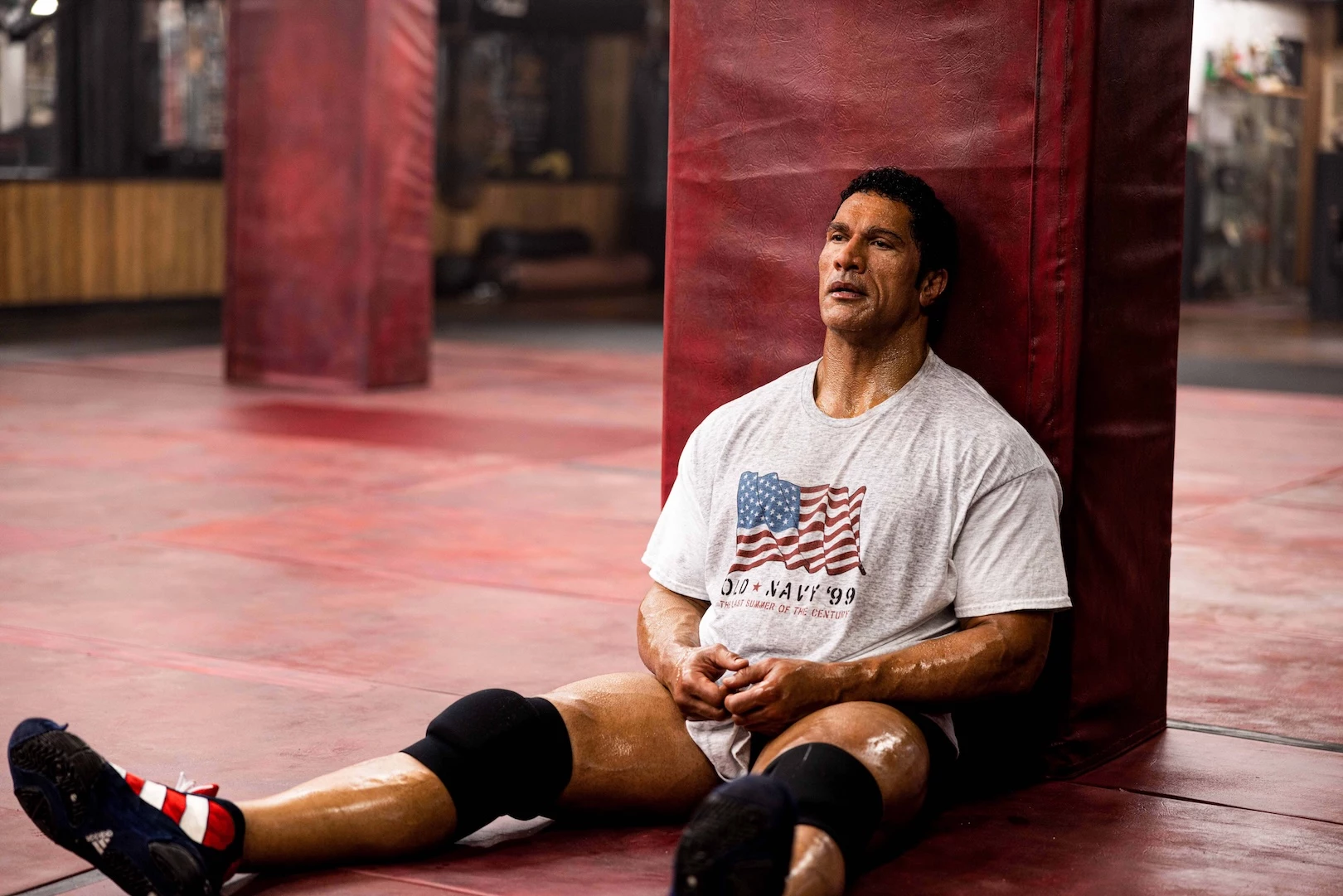
To make the contrast even stronger, Johnson appeared to gain even more muscle mass on top of his already impressively built physique. He also used prosthetic makeup and a wig to make the disguise more believable. (Johnson is 53 years old; Kerr was in his early 30s during the film.) While not known for drastically changing his appearance in roles, Johnson also adopted a higher vocal pitch and a subtle accent to complete the transformation – all of which resulted in a fairly convincing portrayal of the actual UFC fighter.
Having spent years as a professional wrestler, Johnson effortlessly portrays the MMA sequences. He also convincingly depicts Kerr’s more troubled times – showing him emotionally shattered after a difficult fight and weeping when his substance abuse is at its worst. The performance is incredibly believable; you sometimes forget you’re watching one of the most famous actors in the world.
Where The Smashing Machine doesn’t quite succeed is in what it tries to *say* with its compelling portrayal of athletes’ struggles-it mostly just shows that professional athletes endure immense difficulties that fans are usually unaware of. The film marks Benny Safdie’s first solo project; previously, he was known for directing alongside his brother, creating intense thrillers like Good Time and Uncut Gems. Their previous work was characterized by a gripping sense of speed and suspense, drawing viewers into the characters’ lives and making them deeply invested in their attempts to escape challenging situations.
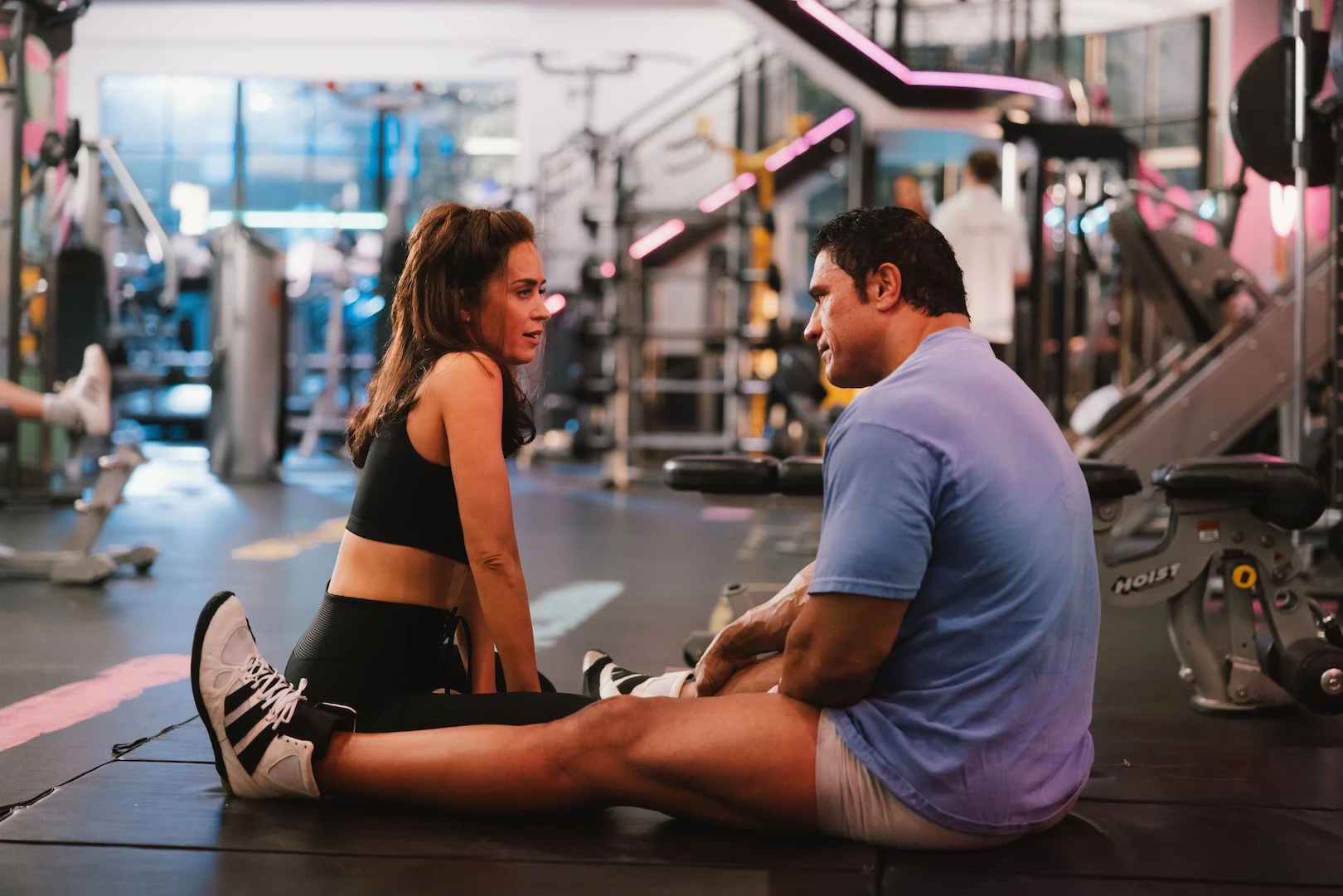
As a film buff, I’ve always been drawn to the kinds of characters the Safdie brothers create, and Mark Kerr definitely feels like one of them. It’s not like anyone is *making* him take these incredibly tough fights for almost no money, or pushing him to use drugs to deal with the pain. (The film actually shows a lot of moments where Kerr uses his surprisingly gentle nature to get drugs from people like trainers, receptionists, and even doctors.) But what struck me about The Smashing Machine, compared to the Safdies’ other work, is that it doesn’t really build any real tension or a sense of something urgent happening with Kerr’s struggles. It just… keeps going, showing one difficult situation after another.
One issue with the film is how much time is spent on the unhealthy dynamic between the main character and his girlfriend, Dawn, portrayed by Emily Blunt in a believable, though not particularly memorable, performance. When the story starts in 1997, Kerr and Dawn are already a couple, and the movie doesn’t delve into what initially drew them together, or what makes them stay together despite their frequent fights-other than, presumably, their reliance on each other.
Throughout the film, Dawn repeatedly challenges Kerr’s boxing career, and he reacts with aggressive displays that sharply contrast with the friendly personality he shows to others, even his MMA rivals. This isn’t a relationship with good and bad moments; it’s entirely negative, and the film revisits these troubled interactions so often that it’s hard to understand why the director keeps emphasizing the couple’s clear dysfunction.
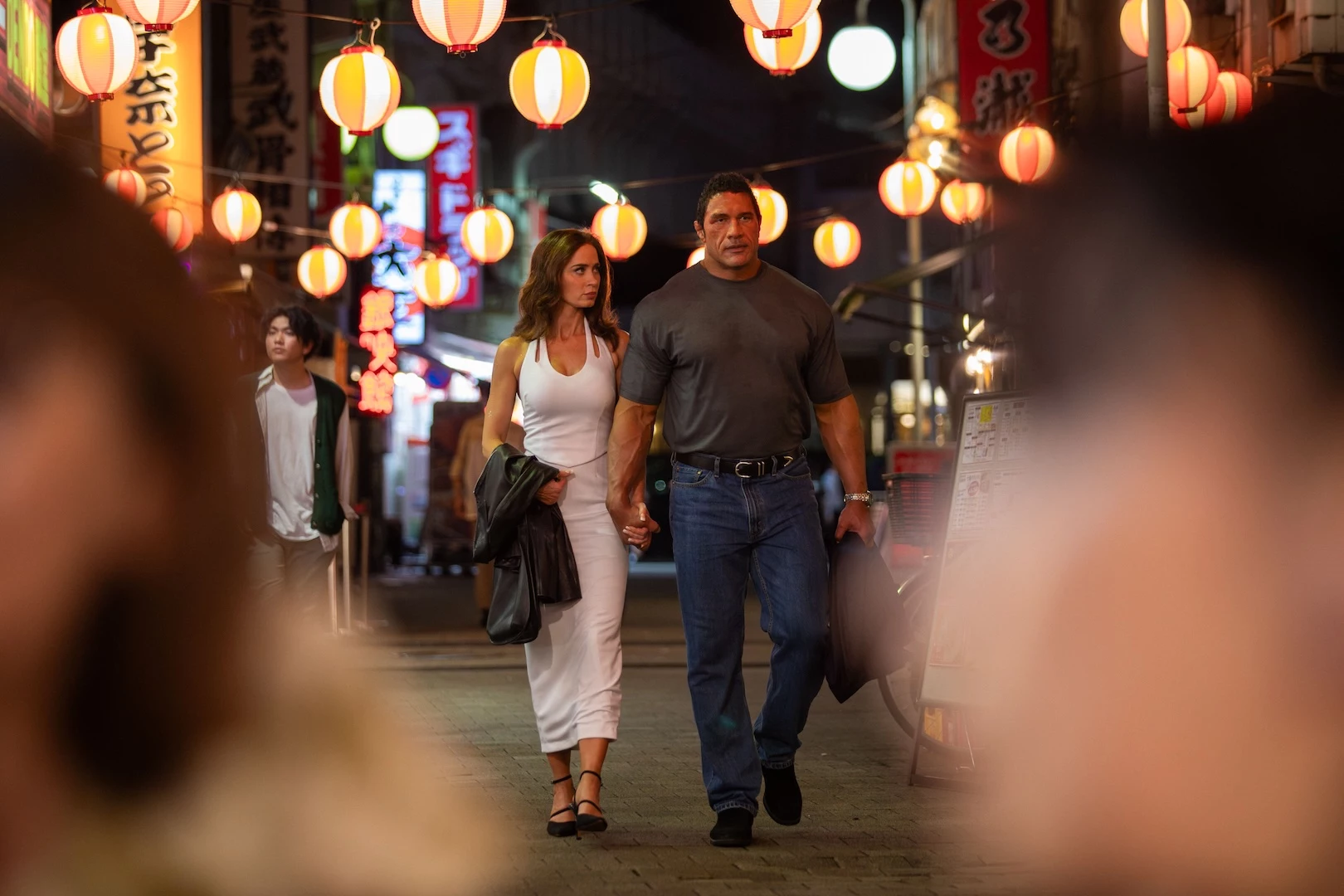
The Smashing Machine ends on a surprisingly subdued note; much like real professional wrestling, the matches aren’t predetermined, and the outcomes aren’t always what viewers anticipate. However, the events *before* the finale feel strangely lifeless, and the conclusion to Kerr’s relationship with Dawn is ultimately disappointing. The filmmaking by Safdie, Johnson, and Blunt is technically impressive in recreating this era and setting, but it doesn’t quite translate into a genuinely captivating sports narrative. The Smashing Machine isn’t a resounding success, unfortunately. It’s more of a narrow victory, a split decision.
Additional Thoughts:
-No film ever made has spent as much time showing the details of making protein shakes. The movie constantly wonders about the right ingredients – how many bananas should go in? Half a banana? One and a half? This is particularly amusing when you consider Dwayne Johnson’s famously indulgent cheat meals, which he often shares in interviews and on social media.
–The Smashing Machine is inspired by a 2002 documentary with the same title, directed by John Hyams. In fact, “based on” doesn’t quite capture how much of the new film directly comes from the original; large portions are nearly identical to the documentary, including specific camera angles, the actors’ costumes, and even lines of dialogue. Because the original film isn’t very famous outside of mixed martial arts communities, viewers might not notice how much the Safdie brothers borrowed from it. However, if you’ve seen the documentary, much of the new film will feel familiar.
RATING: 5/10
The Best Movie of Every Year for the Last 100 Years (According to Letterboxd)
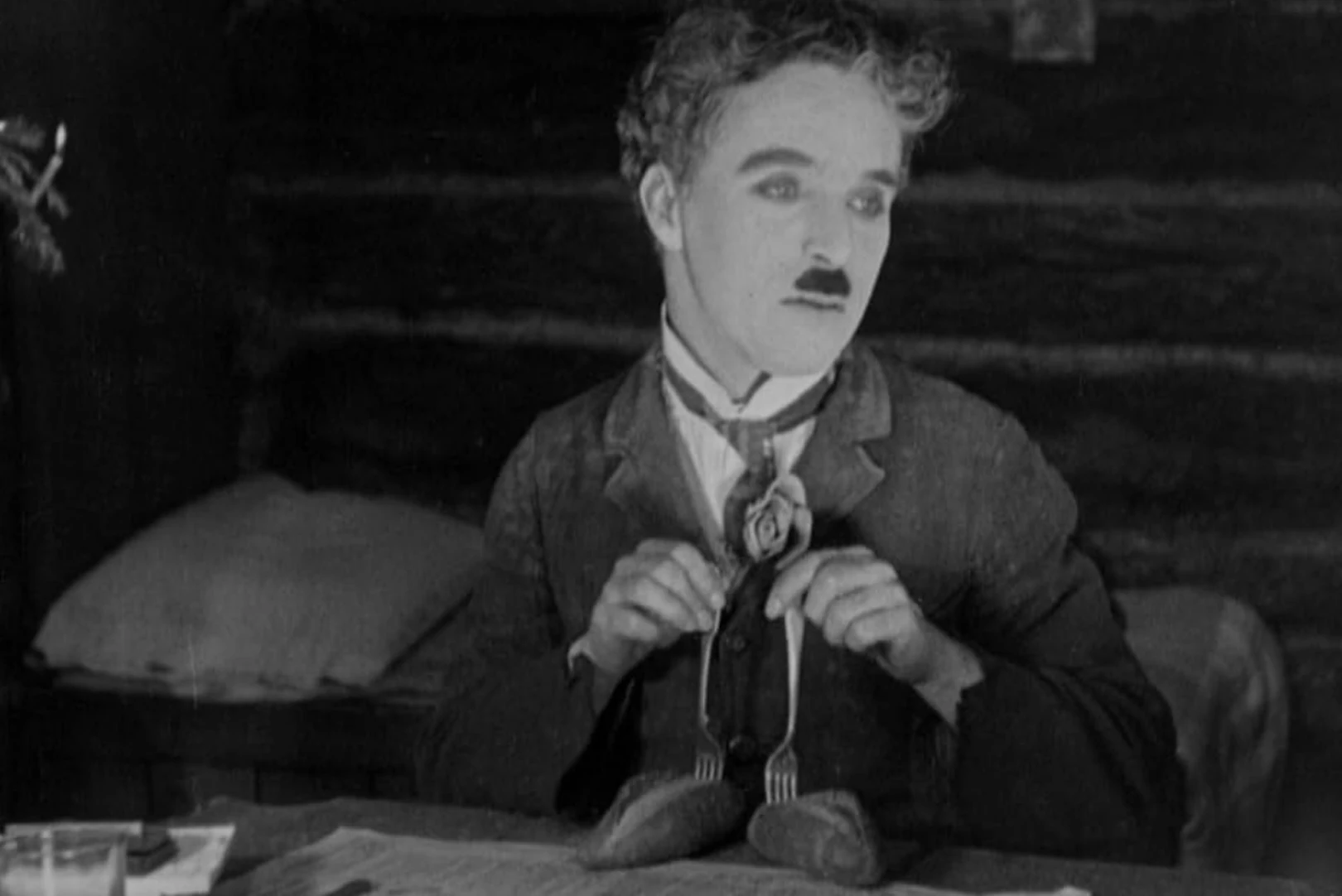
1925: The Gold Rush
Letterboxd Rating: 4.15
For almost a hundred years, people have considered Charlie Chaplin to be one of the best silent film directors of all time. His film The Gold Rush, where Chaplin’s famous Little Tramp searches for gold in Alaska, is widely celebrated as one of his greatest achievements.
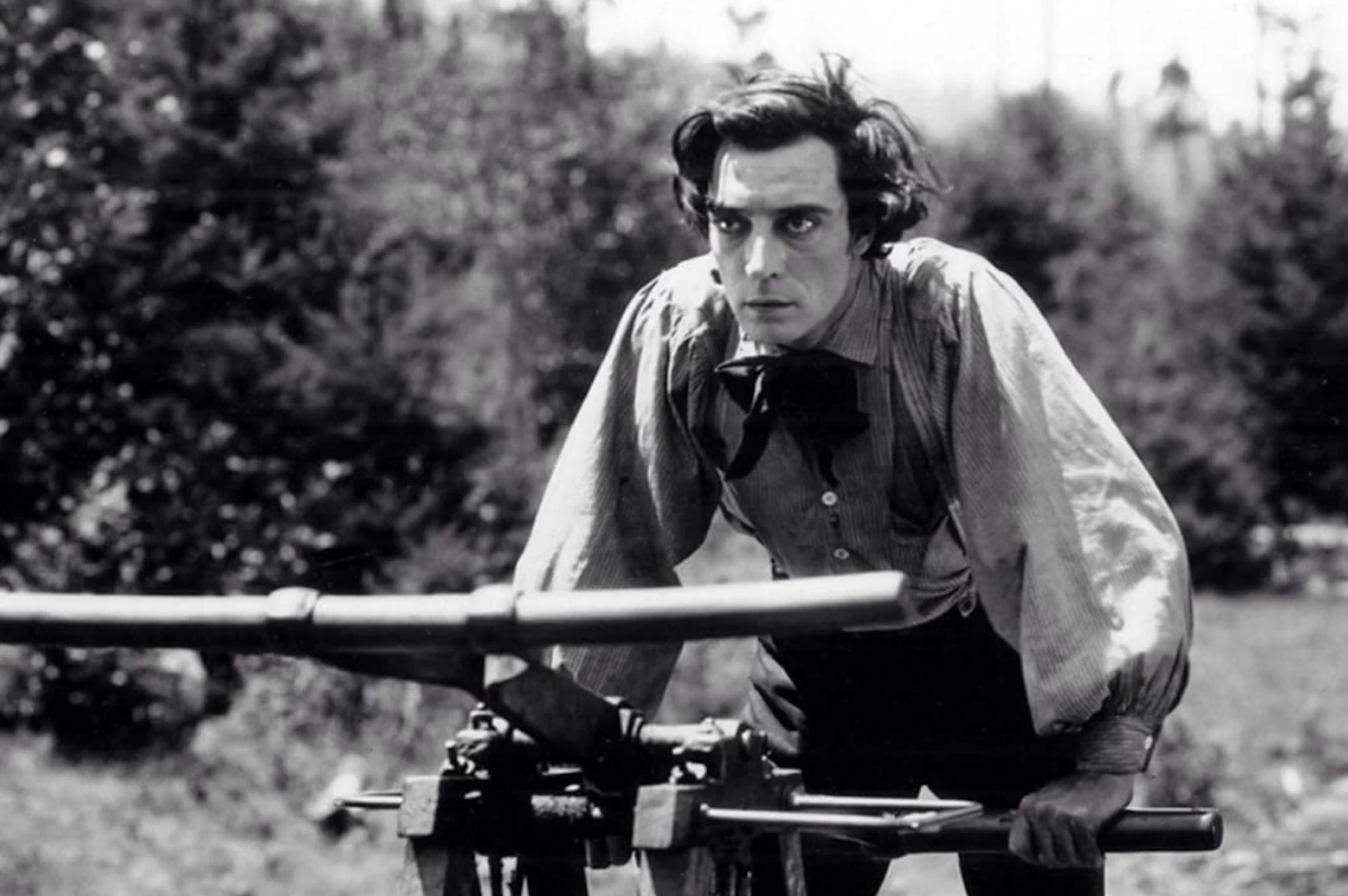
1926: The General
Letterboxd Rating: 4.20
Buster Keaton was likely Charlie Chaplin’s greatest rival, both in the past and currently. Of his films, The General is widely seen as his best work. Keaton stars with an actual locomotive – The General itself – and the film’s incredible practical stunts still influence action filmmakers today.

1927: Metropolis
Letterboxd Rating: 4.25
A lot of what we see in science fiction today owes a debt to Metropolis, the creatively visionary film by Fritz Lang that tells a story about a deeply divided society struggling with the changes brought on by technology.

1928: The Passion of Joan of Arc
Letterboxd Rating: 4.43
Interested in seeing how powerfully close-up shots can be used in film? Check out Carl Theodor Dreyer’s The Passion of Joan of Arc, starring Renée Falconetti, who delivers a truly heartbreaking performance – considered one of the greatest in cinematic history.

1929: Man With a Movie Camera
Letterboxd Rating: 4.28
As a film buff, I can tell you that pretty much everyone who goes to film school sees Dziga Vertov’s Man With a Movie Camera at least once. And if you haven’t, you really should! It’s easy to find – the whole thing’s on YouTube – and it’s amazing to see how the techniques of montage editing were basically established right there on screen.

1930: All Quiet on the Western Front
Letterboxd Rating: 4.17
This film won an early Best Picture Oscar and is based on a well-known novel about the horrors of war. It’s been adapted for the screen multiple times, with the most recent version released in 2022 by Edward Berger on Netflix.

1931: City Lights
Letterboxd Rating: 4.33
Prepare to see many films by Chaplin on this list. City Lights, released in 1931, marked a turning point for the silent film master, as he explored more dramatic themes while developing his iconic Tramp character. The story centers around the Tramp falling in love with a blind woman and his efforts to help her regain her vision.

1932: Trouble in Paradise
Letterboxd Rating: 4.11
This is likely one of the lesser-known films on the list – it’s a fast-paced, early sound-era comedy directed by Ernst Lubitsch, featuring two con artists who join forces for a major scheme. It’s a genuinely hilarious movie, and it’s particularly interesting to see a comedy rank so highly, as that’s quite rare in modern film rankings. (I’ll discuss that further down.)

1933: The Testament of Dr. Mabuse
Letterboxd Rating: 4.03
I’m really fascinated by this film – it’s the second Fritz Lang movie we’re looking at, and interestingly, it’s the first sequel on our list! It continues the story he started with Dr. Mabuse the Gambler back in 1922, presenting another chilling thriller centered around a brilliant criminal mastermind. It’s incredible to learn that it was actually banned in Germany during the 1930s, but thankfully, it gained a much wider appreciation after being rediscovered following World War II. And the story doesn’t end there – Lang even went on to create a third installment, The Thousand Eyes of Dr. Mabuse.

1934: It Happened One Night
Letterboxd Rating: 4.17
This classic screwball comedy, featuring Clark Gable and Claudette Colbert, made history as the first film to win all five major Academy Awards: Best Picture, Best Actor, Best Actress, Best Director, and Best Screenplay.

1935: Tange Sazen and the Pot Worth a Million Ryo
Letterboxd Rating: 3.99
To be honest, I hadn’t seen this film before, and I only knew the basic idea. It’s a comedy directed by Sadao Yamanaka, centering around a hunt for a lost treasure map – hidden inside a flowerpot, of all places! Tange Sazen and the Pot Worth a Million Ryo isn’t super famous here in the US, but apparently, it’s a true classic back in Japan.

1936: Modern Times
Letterboxd Rating: 4.26
Chaplin #3 on this list is one of his greatest works, a very funny and very dark comedy about how working men like Chaplin’s Little Tramp become literal cogs in the all-consuming machine of capitalism.

1937: Make Way For Tomorrow
Letterboxd Rating: 4.23
Director Leo McCarey was famous for comedies such as The Awful Truth and Duck Soup. However, many critics consider this film his masterpiece-a deeply moving story about an older couple facing hardship during the Great Depression, and feeling neglected by their children.

1938: Bringing Up Baby
Letterboxd Rating: 4.00
This wonderfully funny and fast-paced comedy is directed by Howard Hawks and stars Katharine Hepburn, Cary Grant, and even a leopard! It’s a classic combination that still works perfectly today.

1939: The Story of the Last Chrysanthemum
Letterboxd Rating: 4.14
Though not as widely known globally as directors like Akira Kurosawa or Yasujirō Ozu, Kenji Mizoguchi was a Japanese filmmaker who created some of the most poignant and heartbreaking films of the 20th century. One example is The Story of the Last Chrysanthemums, a film set within the traditional Japanese art form of 19th-century kabuki theater.

1940: The Great Dictator
Letterboxd Rating: 4.33
Chaplin delivers another sharp satire, this time targeting Adolf Hitler in The Great Dictator. Though it sparked debate when it was first released, it remains a remarkably courageous and funny film.
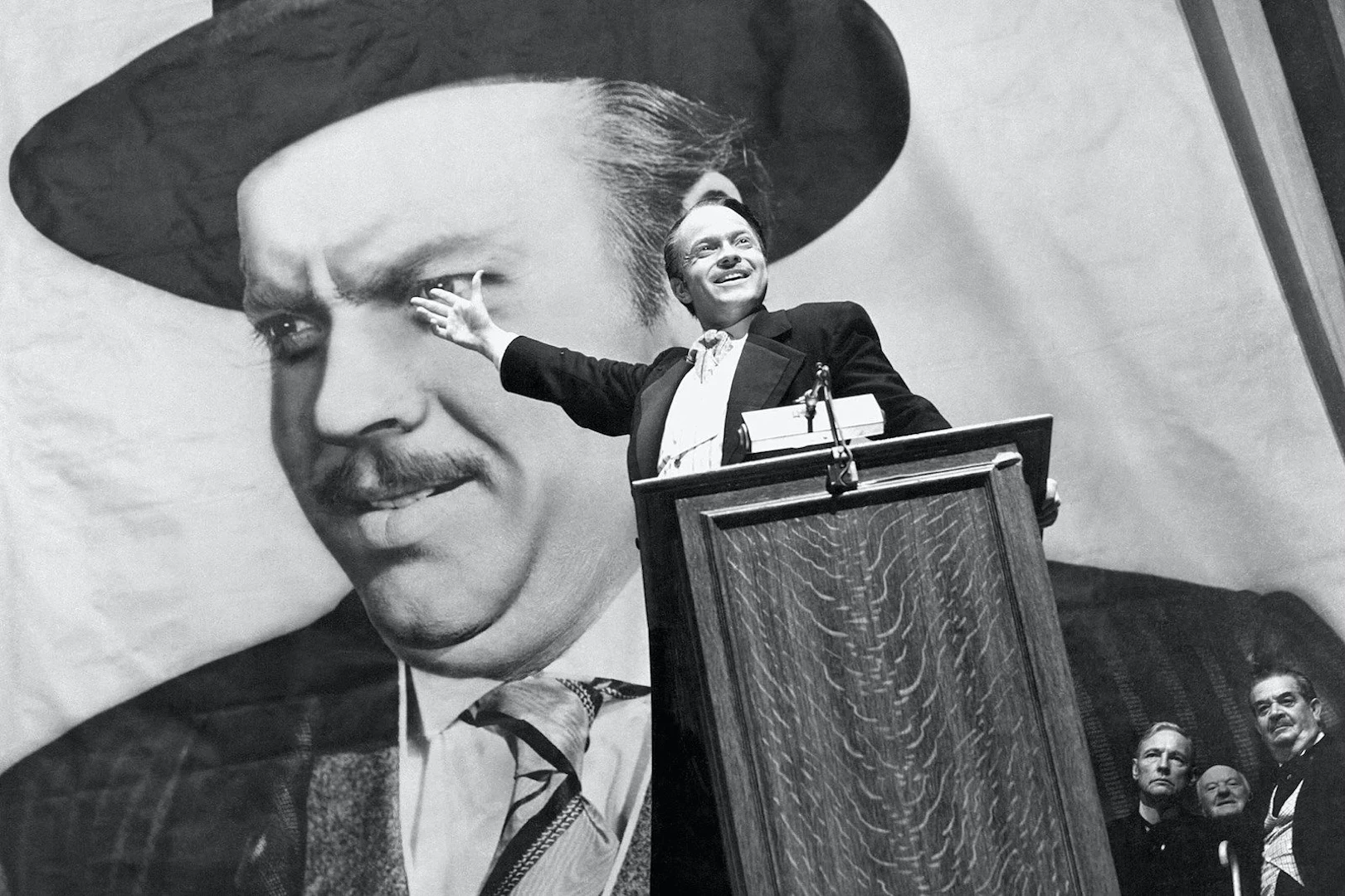
1941: Citizen Kane
Letterboxd Rating: 4.19
While Citizen Kane isn’t always ranked number one on lists of the best movies anymore – even Sight & Sound Magazine has changed its pick – it remains the highest-rated film from 1941 on Letterboxd. And that makes sense! Orson Welles’ first ever feature film completely changed how movies were made in Hollywood during the 1940s, ignoring all the established conventions.

1942: To Be Or Not To Be
Letterboxd Rating: 4.33
This delightful comedy, a classic from director Ernst Lubitsch, cleverly blends humor with a wartime setting. It features the talents of
Carole Lombard and
Jack Benny. (Interestingly, it was remade decades later with
Mel Brooks and
Anne Bancroft – that version is also highly recommended!)

1943: Meshes in the Afternoon
Letterboxd Rating: 4.26
This film is a fantastic pick – it’s one of the first avant-garde pieces by innovative filmmaker Maya Deren. It’s surreal and unusual, making it hard to put into words. Luckily, you can find it on YouTube and watch it immediately!

1944: Double Indemnity
Letterboxd Rating: 4.26
This exciting crime film, directed by Billy Wilder, features a dangerous woman (Barbara Stanwyck) who charms an insurance agent (Fred MacMurray) into helping her murder her husband so they can collect the insurance payout. It’s a classic example of film noir at its best.

1945: Brief Encounter
Letterboxd Rating: 4.33
As a film lover, I always say no conversation about the best romance movies is complete without Brief Encounter. It’s about two married people who meet by chance at a train station and end up having an affair. What I really appreciate is that, unlike so many romantic films, it doesn’t take the easy way out with a happily-ever-after ending, even if it doesn’t quite ring true. Brief Encounter, directed by the brilliant David Lean, is exactly what you need when you’re tired of that kind of predictable storytelling.

1946: It’s a Wonderful Life
Letterboxd Rating: 4.41
Today, It’s a Wonderful Life is considered a classic Christmas film. However, when it was released in 1946, the movie-which tells the story of a generous man who learns that happiness isn’t about money-wasn’t well-received by critics or audiences. It’s probably a good thing Letterboxd didn’t exist back then…

1947: Out of the Past
Letterboxd Rating: 4.12
You’ll be hard-pressed to find a film noir with a more atmospheric look or sharper writing than Out of the Past, featuring Robert Mitchum as a former detective haunted by his history. It’s incredibly bleak and stylish, but wasn’t initially praised as a classic. Similar to It’s a Wonderful Life, it’s received a lot of positive attention over time. However, unlike that film, its central idea is that life isn’t always great.

1948: The Red Shoes
Letterboxd Rating: 4.40
The film is bursting with color – and what color it is! The Red Shoes, a story about a talented ballerina struggling to balance love and her passion for dance, boasts some of the most visually stunning Technicolor cinematography ever filmed. Be sure to get the Criterion Collection version, which includes a beautifully restored print of the movie.

1949: Late Spring
Letterboxd Rating: 4.34
Renowned Japanese director Yasujirō Ozu’s Late Spring is the beginning of a three-film series starring Setsuko Hara. Each film focuses on a young woman named Norkio and her experiences in Japan after the war. In this film, she portrays a young woman whose father is eager to find her a husband.

1950: Sunset Boulevard
Letterboxd Rating: 4.43
Billy Wilder’s iconic depiction of a glamorous, aging actress (famously declaring, “She’s still big! It’s the pictures that got small!”) is considered one of the most celebrated films ever made about Hollywood and the movie industry.

1951: Ace in the Hole
Letterboxd Rating: 4.27
Billy Wilder, a director whose films continue to resonate today, delivers another insightful work – and some even argue this one is more relevant now than Sunset Boulevard. The story follows Kirk Douglas as a cynical reporter who creates a massive media frenzy around a man trapped in a New Mexico cave. Like It’s a Wonderful Life, this film wasn’t initially well-received. However, Ace in the Hole has gained appreciation over time. Perhaps this is because the harsh world Wilder portrayed increasingly reflects our own reality.

1952: Ikiru
Letterboxd Rating: 4.51
While Akira Kurosawa is widely known for his samurai films – and you’ll find one of those later in this list – his film Ikiru is considered a landmark achievement in humanist storytelling. It features Takashi Shimura as a civil servant who, after learning he has a limited time to live, dedicates himself to finding meaning in his remaining months.

1953: Tokyo Story
Letterboxd Rating: 4.44
This is another deeply moving film from Japan after World War II. Tokyo Story takes inspiration from Make Way for Tomorrow, using a similar idea – an elderly couple feels like a trouble to their self-absorbed children – but sets it in Tokyo, where the couple goes to visit their family. We strongly recommend this film, unless you’re currently thinking a lot about your own mortality. If that’s the case, maybe watch something a little lighter.

1954: Seven Samurai
Letterboxd Rating: 4.60
As a huge movie fan, I have to say that Akira Kurosawa’s Seven Samurai is just… incredible. It wasn’t just a landmark film for samurai movies – it basically *created* the blueprint for so many that followed. But its influence goes way beyond that; you can see its impact on action films from all over the world, even today! The battle scenes are breathtaking, the film looks absolutely gorgeous, and the performances – especially from Takashi Shimura and Toshiro Mifune – are truly unforgettable. Honestly, if you’re at all interested in world cinema, Seven Samurai is a must-see.

1955: Ordet
Letterboxd Rating: 4.35
Twenty-five years after making The Passion of Joan of Arc, Carl Theodor Dreyer created a late-career triumph exploring how differing religious convictions shape the lives of two Danish families. It’s not a simple film to watch-don’t expect to easily enjoy this while distracted by something like Monopoly Go! on your phone-but it’s a profoundly satisfying experience if you fully commit to it.

1956: Night and Fog
Letterboxd Rating: 4.55
This list includes several powerfully somber and challenging films about World War II, such as Alain Resnais’ Night and Fog, a documentary that combines wartime footage with modern shots of former concentration camps. Resnais later became known for directing highly respected art films in the 1950s and 60s, and Night and Fog remains considered one of his most significant achievements.

1957: 12 Angry Men
Letterboxd Rating: 4.63
12 Angry Men isn’t just the highest-rated movie from 1957; it’s consistently ranked among the very best films on Letterboxd. (Currently, it’s the #2 all-time film, trailing only one other, which we’ll discuss shortly – or perhaps in a few years, depending on how you look at it.) Sidney Lumet’s courtroom drama, originally a television play, takes place entirely within a jury room, where twelve men discuss the details of a serious and violent case. Even though it features a small cast, a single location, and a focused storyline, it’s praised for the powerful performances and the clever way the editing and cinematography contribute to the narrative.

1958: Vertigo
Letterboxd Rating: 4.23
It’s a little surprising that only one film by Alfred Hitchcock made this list. However, it’s not surprising that it’s Vertigo. This movie was the first to replace Citizen Kane as the top pick in the Sight & Sound poll, ending Citizen Kane’s long run as the most highly regarded film. Hitchcock’s story of obsession and murder is still considered his best work, though, like many other films on this list, it wasn’t initially a success with audiences or critics.

1959: The Human Condition I: No Greater Love
Letterboxd Rating: 4.55
Letterboxd users really love this film. Masaki Kobayashi’s The Human Condition is a long, almost ten-hour movie in three parts, focusing on one man’s difficult journey through World War II Japan. It’s definitely not a cheerful watch! However, two of the three sections of the film are considered the best movies from their release years. That’s quite an achievement.

1960: Le Trou
Letterboxd Rating: 4.49
This tough and realistic crime movie is inspired by a true story of a jailbreak that happened in Paris in 1947. Interestingly, one of the actors involved was actually part of the real escape plan. The film is often compared to Robert Bresson’s well-known prison drama A Man Escaped – but surprisingly, that film isn’t included here.

1961: The Human Condition III: A Soldier’s Prayer
Letterboxd Rating: 4.62
The last part of Masaki Kobayashi’s Human Condition trilogy is quite difficult to watch, as it shows the fate of its main character leading to a predictably somber ending. However, this might explain why people who use Letterboxd tend to give it such a high rating.

1962: Harakiri
Letterboxd Rating: 4.69
Currently, this 1962 samurai revenge film is the top-rated fiction film on all of Letterboxd. It’s directed by Masaki Kobayashi, who also made The Human Condition. The film is both unsettling and gripping, and it offers a powerful message: “What happens to others today could be your destiny tomorrow.”

1963: High and Low
Letterboxd Rating: 4.60
Spike Lee recently revisited this classic film by Akira Kurosawa, which centers on a rich man grappling with a difficult choice: whether to pay a ransom after his driver’s son is accidentally kidnapped. Lee’s Highest 2 Lowest is enjoyable, but Kurosawa’s original, High and Low, is considered superior.

1964: Woman in the Dunes
Letterboxd Rating: 4.47
The most important takeaway from this list might be this: Don’t skip the films made in 1950s and 60s Japan-you’ll be seriously missing out. This well-known movie by Hiroshi Teshigahara presents a strange tale about a man who becomes stuck in a sand dune with the woman who calls it home.

1965: Red Beard
Letterboxd Rating: 4.39
Red Beard represents the last time Akira Kurosawa directed Toshiro Mifune, a frequent collaborator. While two other films they made together are also on this list, several of their well-known movies aren’t, such as Rashomon, The Hidden Fortress, Yojimbo, and Throne of Blood.

1966: The Good, the Bad, and the Ugly
Letterboxd Rating: 4.50
When we talk about Yojimbo, it’s worth noting that Italian director Sergio Leone used it as inspiration for his first spaghetti Western, A Fistful of Dollars. Leone and Clint Eastwood worked together on two more films in the “Man With No Name” series, including the classic The Good, the Bad, and the Ugly. In that film, Eastwood, Lee Van Cleef, and Eli Wallach are all vying for a hidden treasure. Even if you haven’t watched it, you’re likely familiar with the film’s music, distinctive style, and iconic three-way gunfight at the end.

1967: War and Peace
Letterboxd Rating: 4.36
I’ve never gotten around to reading War and Peace. Perhaps I should just watch the film adaptation. Hmm, how long is the movie, anyway? Never mind, I’ve changed my mind.

1968: Once Upon a Time in the West
Letterboxd Rating: 4.39
Leone built upon the epic scope he established with The Good, the Bad, and the Ugly, delivering 1968’s Once Upon a Time in the West. It’s a fantastic movie with a particularly memorable title that has been widely imitated over the years.

1969: Army of Shadows
Letterboxd Rating: 4.36
Army of Shadows shares many similarities with other films on this list. It’s set during World War II? Yes. Does it feature visually appealing cinematography? Yes. Are the acting performances strong? Absolutely. And does it offer a very dark and pessimistic view of life? Definitely.

1970: Le Cercle Rouge
Letterboxd Rating: 4.21
We move to the 1970s with Jean-Pierre Melville’s sequel to Army of Shadows, Le Cercle Rouge. This is a heist movie, and its almost completely silent ending has been a big influence on many filmmakers since then.

1971: Demons
Letterboxd Rating: 4.22
So, I stumbled across this pretty unknown film by Japanese director Toshio Matsumoto. Honestly, I hadn’t heard of it before! But that’s why I love
Letterboxd – it’s got this great watchlist feature. If you find something interesting, like I did, you can just click that little plus button and add it to your list for later. It’s a perfect way to keep track of all those films you want to check out!

1972: The Godfather
Letterboxd Rating: 4.53
Do you really need me to tell you the premise of The Godfather? Okay fine: The Godfather is a movie about a humble scientist who develops a formula that grants him godlike powers, which he uses to teach his children lessons about life. It’s pretty good, you should check it out.

1973: Scenes From a Marriage
Letterboxd Rating: 4.43
Ingmar Bergman hasn’t appeared on this list yet – neither The Seventh Seal nor Persona – but he’s featured here with his important and well-known film about a failing marriage. (And just to clarify: Though Scenes From a Marriage originally aired as a TV miniseries, a shorter version was shown in cinemas, which is why I’ve included it.)
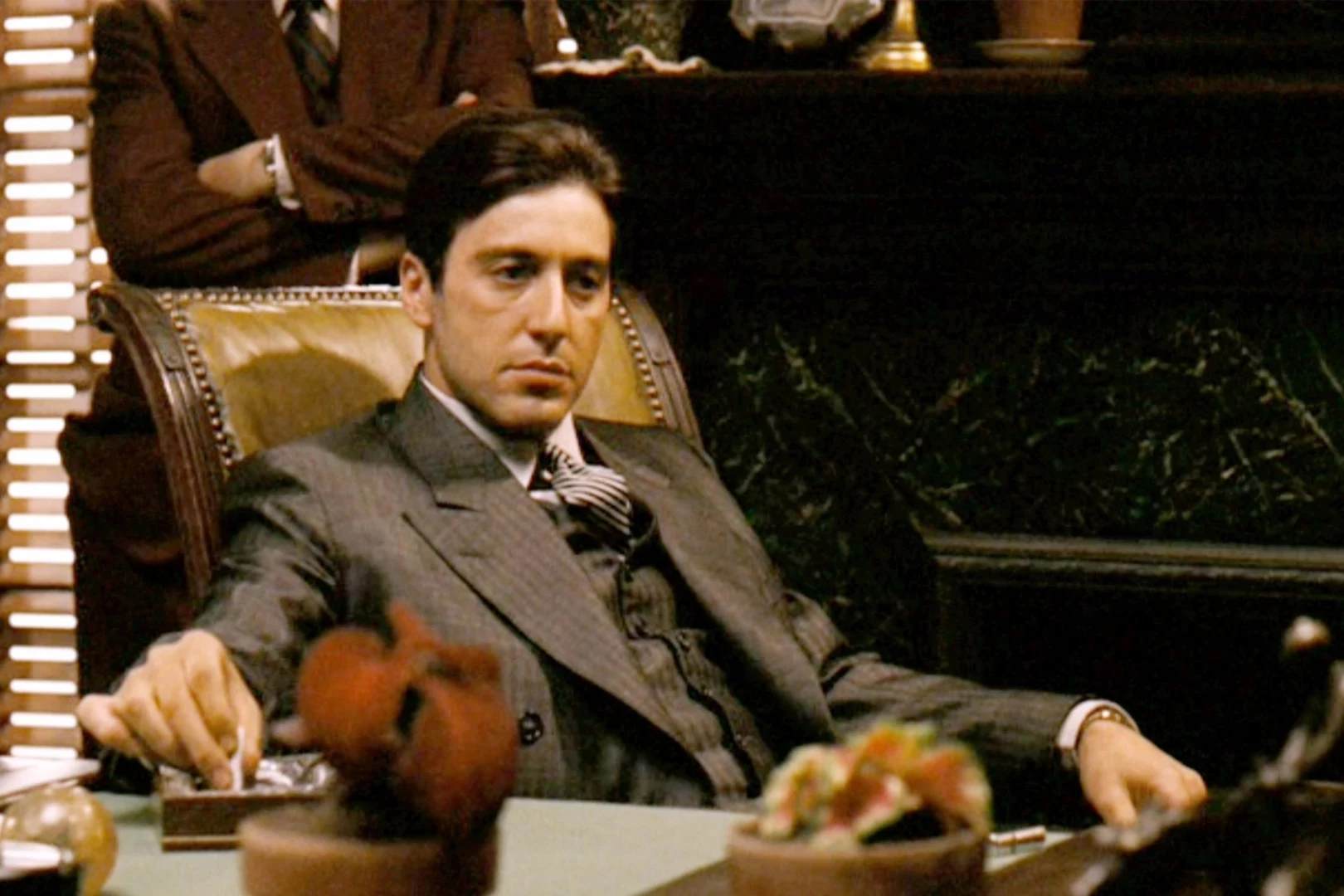
1974: The Godfather Part II
Letterboxd Rating: 4.59
Yes, they made a second Godfather. That wacky scientist and his magical god formula came back! Fans have debated which of the two Godfathers is the better movie for 50 years; Letterboxd backs Part II with a rating that’s 0.06 higher than the first film.

1975: Barry Lyndon
Letterboxd Rating: 4.40
The historical film Barry Lyndon represented a significant change of pace for director Stanley Kubrick, differing greatly from his earlier works like 2001: A Space Odyssey and A Clockwork Orange. When it was released in 1975, many critics found it confusing – something that happened with several of Kubrick’s films throughout his career. However, critics generally changed their minds over time.

1976: Harlan County USA
Letterboxd Rating: 4.33
Barbara Kopple’s straightforward documentary covering the 1973 strike by coal miners in Harlan County is still a must-see for anyone making nonfiction films – and for those interested in the history of workers’ rights in the United States.

1977: The Ascent
Letterboxd Rating: 4.42
The Ascent received the highest honor at the Berlin Film Festival and is considered a standout film from 1970s Soviet cinema. The movie presents a difficult story about World War II, focusing on the experiences of two Russian soldiers who were captured by the Germans.

1978: Autumn Sonata
Letterboxd Rating: 4.48
This is another film by Ingmar Bergman, featuring yet another Bergman – Ingrid, alongside Liv Ullmann. The movie explores the complex bond between a mother and daughter. It’s a truly exceptional film and well worth watching, but maybe avoid it on Mother’s Day.

1979: Apocalypse Now
Letterboxd Rating: 4.44
Wow, Apocalypse Now… what a film! I remember when it first came out, the press was saying it was a total disaster, a huge mistake. But then people *saw* it, and it completely changed. It’s easily one of the most disturbing and powerful depictions of war I’ve ever seen – a truly horrifying vision, and absolutely worth all the trouble it took to make it.

1980: The Empire Strikes Back
Letterboxd Rating: 4.40
As a huge Star Wars fan, I always see people debating which film is superior. It’s interesting that The Empire Strikes Back made this list, but the original Star Wars didn’t. Maybe, just maybe, this finally settles the argument about which one is truly the best!

1981: Das Boot
Letterboxd Rating: 4.32
Many excellent films feature submarines-the tight spaces naturally create tension, perfect for a suspenseful thriller-but Wolfgang Petersen’s Das Boot is considered the best of the bunch.

1982: Fanny and Alexander
Letterboxd Rating: 4.42
It’s hard to categorize this one as strictly a film or TV show; Ingmar Bergman originally created Fanny and Alexander as a miniseries. However, a shorter version was also shown in cinemas, and eventually, both versions were screened in art house theaters globally. It even won the Academy Award for Best Foreign Language Film, which to me, solidifies its status as a movie.

1983: Nostalgia
Letterboxd Rating: 4.28
Andrei Tarkovsky, a renowned Russian filmmaker, is celebrated globally for his deliberate storytelling and evocative subject matter. Nostalgia, which follows a Russian author’s journey to Italy for research, employs Tarkovsky’s characteristic style-featuring extended shots and dreamlike sequences-to portray the feeling of being an outsider in a foreign country.

1984: Stop Making Sense
Letterboxd Rating: 4.68
As a huge fan, I think Stop Making Sense is possibly the greatest concert film ever made! Jonathan Demme really nailed it, capturing the energy of Talking Heads’ 1983 shows at the Pantages Theatre. It’s got all their classics, like “Psycho Killer,” “Life During Wartime,” and “Take Me to the River.”

1985: Come and See
Letterboxd Rating: 4.62
For a period, this powerfully moving Russian war film held the top spot in ratings on Letterboxd. (Currently, as of today, it’s ranked #4, following Harakiri, 12 Angry Men, and The Human Condition Part III: A Soldier’s Prayer.) Directed by Elem Klimov, the film portrays some of the most horrific acts committed by the Nazis during World War II, experienced through the perspective of a young boy who joins a band of Soviet resistance fighters. Even among the intensely dark films on this list focusing on war, Come and See is exceptionally harsh and disturbing.

1986: The Sacrifice
Letterboxd Rating: 4.29
Andrei Tarkovsky learned he had cancer soon after completing The Sacrifice, and sadly passed away by the end of 1986. This adds a particularly poignant layer to his last film. The story centers on a man attempting to prevent World War III and the end of the world by offering his life to God as a sacrifice.

1987: Where Is the Friend’s House?
Letterboxd Rating: 4.37
This film marks the start of Abbas Kiarostami’s renowned “Koker Trilogy” – named after the Iranian village where all three movies are set. It tells the story of a young boy who sets out to find the house of a classmate. His mission is to return a notebook, hoping to prevent his friend from being expelled from school.

1988: Cinema Paradiso
Letterboxd Rating: 4.49
People who really love film often enjoy movies *about* filmmaking. (It’s a bit of a tongue-twister!) Cinema Paradiso, a film centered around a classic Italian movie theater and the touching bond between a young moviegoer and the projectionist, took home the 1989 Academy Award for Best Foreign Language Film and continues to be a beloved choice for film enthusiasts.

1989: Do the Right Thing
Letterboxd Rating: 4.40
The Academy Awards famously didn’t even acknowledge Spike Lee’s Do the Right Thing with a Best Picture nomination in 1989. (Driving Miss Daisy ended up winning the award, beating out Born on the Fourth of July, Dead Poets Society, Field of Dreams, and My Left Foot.) However, Letterboxd users recognized the film’s quality and ranked it as the best movie of that year.

1990: Paris Is Burning
Letterboxd Rating: 4.54
This documentary about New York City’s Ballroom scene is a hugely influential film from the early 1990s. It doesn’t just document this unique subculture, but also captures the spirit of the people and the era. Director Jennie Livingston dedicated seven years to making the film, and the result is one of the most significant documentaries of its time.

1991: A Brighter Summer Day
Letterboxd Rating: 4.50
In the 2022 Sight & Sound film poll, Edward Yang’s almost four-hour film, A Brighter Summer Day, was ranked 78th. The film is set in 1960s Taiwan and tells two stories at once: a young man’s journey to adulthood and a crime story inspired by a real murder from the director’s youth.

1992: Baraka
Letterboxd Rating: 4.33
Baraka is a documentary that shows the beauty and vulnerability of our planet. Instead of a typical narrative or narration, it uses stunning 70mm footage from different countries around the world.

1993: Schindler’s List
Letterboxd Rating: 4.53
Steven Spielberg’s powerful and heartbreaking film about Oskar Schindler (played by Liam Neeson) finally earned him an Oscar. The movie tells the true story of a German businessman who bravely saved over a hundred Jewish people by giving them jobs in his factory during World War II.

1994: The Shawshank Redemption
Letterboxd Rating: 4.58
In 1994, the straightforward story of friendship and strength in The Shawshank Redemption didn’t get as much attention as the stylish presentation of Pulp Fiction or the grand scale and special effects of Forrest Gump, which ultimately won Best Picture that year. However, opinions have shifted over time, particularly on Letterboxd. (Pulp Fiction currently has an average rating of 4.25, while Forrest Gump has a 4.16.)

1995: La Haine
Letterboxd Rating: 4.50
La Haine is similar to films like The Human Condition or Come and See in that it’s gained popularity thanks to a dedicated following on Letterboxd. Viewers enjoy these movies – this one is a French film focusing on three young immigrants – and share their enthusiasm, which then inspires others on the app to watch them too. In the summer of 2025, the film reached a milestone, being logged by a million different Letterboxd users – an accomplishment usually reserved for bigger, more well-known films.

1996: Secrets & Lies
Letterboxd Rating: 4.28
Mike Leigh had already established himself as a respected director by the mid-1990s. However, Secrets & Lies, a film centered on a woman learning who her biological mother is and the impact of their reunion, cemented his position among the world’s leading filmmakers.

1997: Perfect Blue
Letterboxd Rating: 4.39
Satoshi Kon, who passed away in 2010, is considered one of the greatest anime directors of all time. While his films – including Tokyo Godfathers, Millennium Actress, and Paprika – are all critically acclaimed, Perfect Blue is widely seen as his masterpiece. It’s currently the highest-rated movie from 1997 on Letterboxd, even surpassing well-known films from that year such as Boogie Nights and Titanic.

1998: Eternity and a Day
Letterboxd Rating: 4.38
This film, which won the Palme d’Or, is a Greek production starring Bruno Ganz as a writer facing his own mortality. He attempts to rescue a young immigrant who is being exploited by human traffickers. It seems
Letterboxd users don’t tend to favor feel-good movies released after the 1930s!

1999: Fight Club
Letterboxd Rating: 4.27
While it sparks debate for some, David Fincher’s Fight Club has earned a lot of excellent reviews, making it the highest-rated film from 1999. I could discuss Fight Club further, but, as they say…

2000: Yi Yi
Letterboxd Rating: 4.54
Yi Yi, Edward Yang’s expansive story following several generations of a family in Taiwan, seems to be even more well-loved on Letterboxd and elsewhere than A Brighter Summer Day. (It’s also an hour shorter, making it a good choice if you’re looking for a heartfelt family drama but prefer something not quite that long.)

2001: Spirited Away
Letterboxd Rating: 4.45
Hayao Miyazaki was already renowned as a master of traditional animation before 2001. However, it was then that he released Spirited Away, which followed the international acclaim of 1997’s Princess Mononoke and ultimately earned Studio Ghibli its first Academy Award for Best Animated Feature. In contrast to many of the first computer-animated films of that time, Spirited Away continues to look remarkably beautiful.

2002: City of God
Letterboxd Rating: 4.55
This large-scale crime story from Brazil helped launch the career of its director, Fernando Meirelles. It was later expanded with a television series (City of Men) and a new sequel series (City of God: The Fight Rages On).

2003: The Lord of the Rings: The Return of the King
Letterboxd Rating: 4.53
My opinion is that The Return of the King isn’t as good as the other two Lord of the Rings films. I actually think The Fellowship of the Rings is the strongest of the three. While Letterboxd users don’t seem to agree, I’m quite confident in my view.

2004: Nobody Knows
Letterboxd Rating: 4.40
Hirokazu Kore-eda’s Nobody Knows tells the story of young siblings trying to cope after being left by their mother. (It’s sadly based on a true story.) It’s another fantastic and heartbreaking film that’s popular on Letterboxd.

2005: Linda Linda Linda
Letterboxd Rating: 4.16
Films that are older sometimes see their ratings increase on Letterboxd, especially if they have a new release. I think that happened with Linda Linda Linda, a well-liked 2005 comedy about a teen rock band. It was remastered and re-released in the summer of 2005, and now it’s currently the highest-rated film from that year.
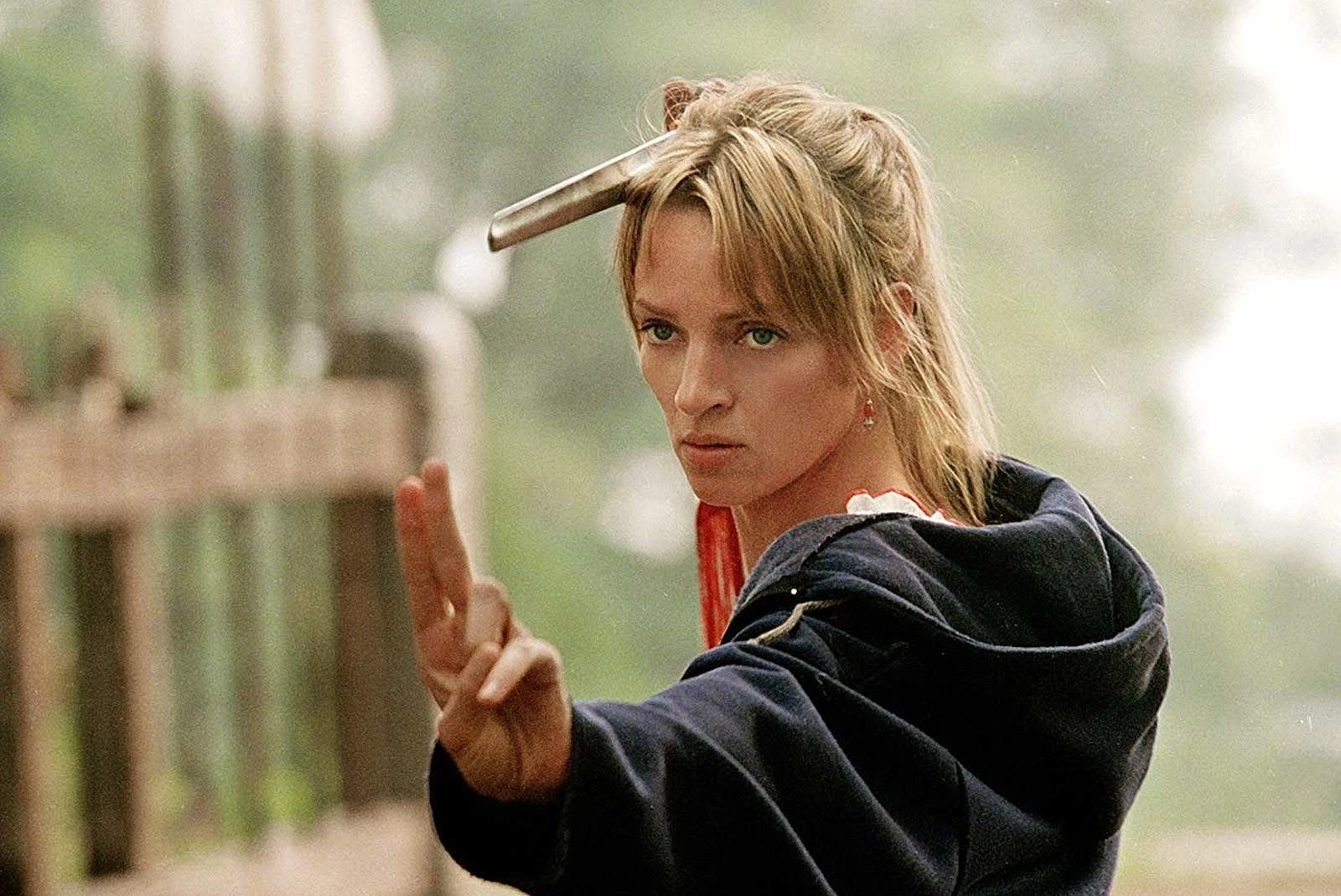
2006: Kill Bill: The Whole Bloody Affair
Letterboxd Rating: 4.39
Quentin Tarantino originally envisioned Kill Bill as one continuous film for theatrical release. However, producer Harvey Weinstein persuaded him to divide it into two volumes. Later, Tarantino reassembled those two parts into a single, extended version called The Whole Bloody Affair, which he has occasionally shown at screenings since then.

2007: There Will Be Blood
Letterboxd Rating: 4.46
2007 was a fantastic year for movies. When those films first came out, the Coen brothers’ No Country for Old Menreceived most of the major awards-and it’s still considered a standout film from them. However, over the years, Paul Thomas Anderson’s There Will Be Blood has become even more celebrated as a powerful story about the American West and the damaging effects of greed.

2008: The Dark Knight
Letterboxd Rating: 4.48
As a critic, I have to say Christopher Nolan’s The Dark Knight really stood out. It wasn’t just a huge box office success – making over $1 billion globally – but it genuinely impressed critics too. In fact, it’s rated a tenth of a point higher than any other film from 2008, even Sion Sono’s Love Exposure! You don’t see many superhero films cracking this list, and that’s because Nolan doesn’t really *do* typical superhero movies, does he?

2009: Inglourious Basterds
Letterboxd Rating: 4.35
Inglourious Basterds isn’t personally my top Tarantino film, but it makes sense that it’s ranked as the best movie from 2009. This is likely because it includes many things that Letterboxd users seem to appreciate: it’s a smart, well-made historical story taking place during World War II, and it also celebrates the impact that movies can have.

2010: Incendies
Letterboxd Rating: 4.43
Before directing huge hits like Dune and Blade Runner 2049, Denis Villeneuve gained international recognition with this Canadian film. It tells the story of twin brothers who uncover secrets about their family – including a previously unknown brother – after their mother passes away.

2011: A Separation
Letterboxd Rating: 4.37
Despite being made with a budget of under $1 million, Asghar Farhadi’s A Separation earned approximately 25 times that amount in cinemas. It also received several Academy Award nominations and ultimately won the Best Foreign Language Film Oscar – a first for Iranian cinema.

2012: The Act of Killing
Letterboxd Rating: 4.41
This is another outstanding and powerful film. Using daring filmmaking choices, The Act of Killing sheds light on the history of the anti-Communist killings in Indonesia during the 1960s. It includes interviews with the men responsible for these terrible acts, who shockingly even recreated some of their violence for the cameras. The outcome is brutally honest and deeply disturbing.

2013: Prisoners
Letterboxd Rating: 4.31
After directing Incendies, Denis Villeneuve made his American debut with this suspenseful thriller centered around a kidnapping case. When the main suspect is released by the police, the son of one of the victims (Hugh Jackman) decides to seek justice himself. It’s another film that might not be the best choice for a romantic evening.

2014: Interstellar
Letterboxd Rating: 4.43
Christopher Nolan’s sci-fi movie, a story about the powerful bond between a parent and child that transcends time and space, is now considered one of his most famous works – particularly after a special re-release in winter 2024 to celebrate its 10th anniversary.

2015: World of Tomorrow
Letterboxd Rating: 4.32
Don Hertzfeldt and his uniquely crafted animated films have been popular online for years. This collection of three science fiction shorts, World of Tomorrow, is a prime example. Together, they explore a vast timeline-spanning centuries-and tackle big themes like cloning, time travel, and even the end of the world, all brought to life with Hertzfeldt’s distinctive, wobbly animation style.

2016: The Handmaiden
Letterboxd Rating: 4.40
Fans on Letterboxd really appreciate this 2016 erotic thriller by acclaimed Korean director Park Chan-wook, praising its unexpected and surprising plot. (We won’t give anything away – just go and see it!)

2017: A Taxi Driver
Letterboxd Rating: 4.20
You might want to check out this film: It’s a Korean movie starring The Host and Parasite actor Song Kang-ho as a taxi driver. He unwittingly gets involved in the 1980 Gwangju Uprising when he agrees to drive a German journalist (Thomas Krestchmann) to the city to report on the government’s handling of the protests.

2018: Spider-Man: Into the Spider-Verse
Letterboxd Rating: 4.40
Spider-Man: Into the Spider-Verse really brought comic book visuals to life with its creative and unique animation. Beyond the stunning visuals, the film delivered a strong message: anyone can be a hero by taking responsibility and doing what’s right. (Though, being able to climb walls and become invisible definitely helps!)

2019: Parasite
Letterboxd Rating: 4.54
Perhaps the most celebrated film of the 21st century, Bong Joon-ho’s Parasite made history as the first non-English language film to win the Academy Award for Best Picture. It powerfully portrays a society divided by wealth, and the lengths people will go to escape poverty, a theme that will likely continue to resonate for years to come.

2020: The Father
Letterboxd Rating: 4.29
Because of the Covid-19 pandemic, 2020 saw significantly fewer movie releases in cinemas compared to any other year included in this list. Even The Father, the highest-rated 2020 film on Letterboxd, didn’t actually premiere in theaters until early February 2021. (It had a prior showing at Sundance in January 2020.) However, its innovative and personal storytelling, which immerses viewers in the declining mental state of a man (Anthony Hopkins) with dementia, is remarkable and deserves recognition, regardless of when it was released.

2021: Marcel the Shell With Shoes On
Letterboxd Rating: 4.24
This charming film blends live-action with stop-motion animation to follow Marcel, a small creature, and what happens when a filmmaker discovers him and shares videos of his life online. This marks the first time a film from the independent studio A24 appears on this list. Considering their success recently, I expect they’ll likely have multiple films featured if I update this article in the future.

2022: Everything Everywhere All at Once
Letterboxd Rating: 4.26
Everything Everywhere All at Once, which won an Oscar for Best Picture and is highly regarded by many film lovers, uniquely combines science fiction, fantasy comedy, and martial arts.

2023: Spider-Man: Across the Spider-Verse
Letterboxd Rating: 4.41
Only two film series appear more than once on this list: The Godfather and Spider-Verse. This highlights how difficult it is to create a truly excellent sequel. The Spider-Verse team, however, achieved something remarkable by not only continuing their already bold story but also introducing even more Spider-People and pushing the boundaries of animation with diverse styles.

2024: No Other Land
Letterboxd Rating: 4.59
This film won the 2024 Best Documentary Feature Oscar. It was created by a group of Palestinian and Israeli artists and activists and focuses on the continuing conflict in the Middle East. Although it received a lot of praise both internationally and here in the US, No Other Land didn’t secure a traditional distributor. Instead, the filmmakers decided to release it themselves in cinemas and online.
Read More
2025-09-29 23:22







































































































